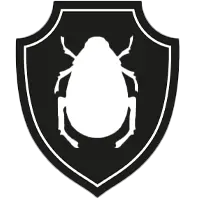Introduction
I’ve seen it countless times in my years as a pest control specialist: homeowners distraught over wasps nesting in their exterior walls.
It’s unsettling, to say the least. But you’re not alone in this.
Many face this issue, and there are effective solutions.
In this article, I’ll guide you through understanding why wasps choose these spots, how to safely remove them, and how to prevent future infestations.
By the end, you’ll be equipped with the knowledge to reclaim your space from these unwelcome guests.
How to get rid of wasps in outside wall – Step-by-step
If you have wasps nesting in an outside wall, it’s essential to approach the situation with caution. Here’s a step-by-step guide to help you safely and effectively get rid of the wasps:
- Identify the Nest: Before you can treat a wasp nest, you need to locate it. Look for wasps entering and exiting a hole in the wall. This will give you an idea of where the nest is situated.
- Safety First:
- Wear protective clothing. This includes long sleeves, pants, gloves, and a hat or hood. Consider wearing multiple layers to prevent stings.
- Use protective eyewear or goggles.
- Ensure that you have an escape route in case the wasps become aggressive.
- Choose the Right Time: It’s best to treat a wasp nest either early in the morning or late in the evening when temperatures are cooler. At these times, wasps are less active and more likely to be inside the nest.
- Use a Wasp Spray:
- Purchase a wasp and hornet spray from a local hardware store. These sprays can shoot a stream of insecticide from several feet away, allowing you to maintain a safe distance.
- Follow the instructions on the label. Typically, you’ll want to spray the entrance of the nest thoroughly.
- After spraying, move away quickly in case any wasps come out of the nest.
- Monitor the Nest: Over the next day or two, monitor the nest from a distance. If you still see wasp activity, you may need to repeat the treatment.
- Seal the Entrance: Once you’re confident that the wasps are gone, seal the entrance to the nest. This will prevent other wasps or pests from using the same entrance in the future. You can use caulk or another sealant to close the hole.
- Consider Professional Help: If you’re allergic to wasp stings, unsure about the process, or the nest is in a challenging location, it’s a good idea to hire a professional pest control company to handle the situation.
- Prevention: To prevent future infestations:
- Regularly inspect your home and property for signs of wasp activity.
- Seal any cracks, crevices, or holes in your home’s exterior.
- Remove or reduce sources of food that might attract wasps, such as open garbage cans or exposed food.
- Consider using wasp traps in areas where you’ve had problems in the past.
Remember, wasps play a vital role in the ecosystem by controlling other pest populations. It’s always a good idea to approach the situation with the goal of removal rather than extermination whenever possible.
Why wasps choose outside walls for nesting
It’s natural to wonder why these winged invaders have chosen your home’s exterior walls as their nesting ground. By understanding their motivations, you can better prevent future infestations. Let’s explore the reasons behind their choice.
The attraction of cavities and voids
Wasps are always on the lookout for safe, sheltered spaces to build their nests. The cavities and voids in outside walls provide an ideal environment for them. These spaces offer protection from the elements and potential predators, making them prime real estate for wasps.
Proximity to food sources
Your home’s surroundings might be rich in the food sources wasps crave. Flowering plants, gardens, and other insect populations can attract wasps. Being close to a steady food supply is a significant factor in their choice of nesting location.
Shelter from predators and weather conditions
Outside walls, especially those with cavities, offer wasps protection from both predators and adverse weather conditions. These walls shield them from rain, wind, and extreme temperatures, ensuring their colony’s survival.
Understanding the reasons behind their nesting choices can help you make your home less inviting to them. In the next section, we’ll discuss the potential risks and damages associated with having wasps in your walls.
Potential risks and damages of wasps in walls
Discovering wasps in your outside walls can be more than just a nuisance; it can pose real risks to both your home and your well-being. It’s essential to be aware of these risks to take timely action. Let’s delve into the potential dangers and damages these insects can cause.
Structural damage to the wall
Wasps, especially when in large numbers, can cause structural damage over time. As they expand their nest, they might chew through wall materials, leading to weakened structures. This can result in costly repairs if not addressed promptly.
Aggressive behavior and stinging risks
While not all wasps are aggressive, some species, like yellow jackets, can become particularly aggressive when they feel their nest is threatened. Stings from wasps can be painful and, in some cases, lead to allergic reactions. It’s always best to approach with caution.
Allergic reactions and health concerns
For those allergic to wasp stings, a single sting can lead to severe reactions, including anaphylaxis. Even if you’re not allergic, multiple stings can pose health risks. It’s essential to be aware of these potential dangers, especially if you have children or pets.
Being informed about these risks underscores the importance of addressing a wasp infestation promptly and safely. In our concluding section, we’ll wrap up our discussion and emphasize the importance of timely intervention and prevention.
Conclusion
Addressing a wasp infestation in your outside walls is more than just a matter of comfort; it’s about safety and home preservation.
Armed with the knowledge from this article, you can take proactive steps to deal with and prevent these unwelcome guests.
Remember, timely intervention and preventive measures can save you from potential risks and costly damages. Stay safe and vigilant!

